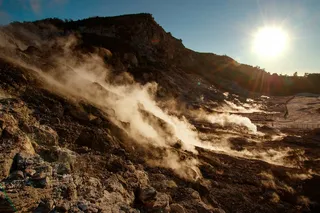In between moonlighting as a fake architect and latex salesman, George Costanza was once a fake marine biologist. His story defines sitcom lore. Caught in another lie while walking the beach with a potential girlfriend, Costanza's supposed expertise was tested by a crowd gathered around a beached whale. He reluctantly waded out to assist. Fifty feet out from shore, an enormous tidal wave threw him on top of the great beast. Face-to-face with the whale’s blowhole, he could tell that something was blocking its breathing. George reached in, felt around, and pulled out the obstruction.
Blocking the whale’s blowhole was Kramer’s infamous golf ball—a Titleist. Cosmo had been driving balls out into the ocean, and one lucky shot had found presumably the only cup in the sea. But we can act like marine biologists too. Could you really score a blowhole in one? The Sea Was Angry That Day My ...













